Ryan Hall's Blog, page 336
October 16, 2015
Shoe Of The Week: adidas Adizero Boston Boost 6
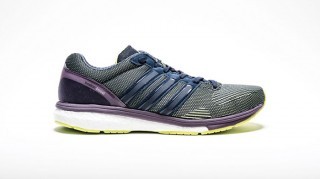
With the addition of a Boost midsole, the new version of the Boston trainer/racer is the best yet.
The updated Boston with Boost midsole foam makes running fast something that just happens.The Boost midsole foam has improved every adidas shoe, and this one is no exception. Made from fused thermoplastic polyurethane pellets, adidas’ Boost midsole material has shown in independent lab tests to be considerably more absorbent and resilient than other types of foam. The new Boston lightweight trainer/racer—which has Boost foam for the first time—is the consummate 10K to marathon racing shoe. This lightweight trainer-racer provides just enough cushioning for a marathon yet the lightness of a racing flat. But with a 10mm heel-toe differential and a near-maximal amount of heel cushioning, the Boston Boost isn’t flat at all—something most of our wear-testers found quite satisfying when running downhill or late in a run. A new airy mesh upper on the men’s (and knitted upper on the women’s) locks down the foot while providing greater breathability, although its narrow, low-volume fit makes it better for racing and fast training than for longer training runs. The Boost foam has enough structure and resiliency that both neutral runners and moderate overpronators will benefit from it. The durable Continental rubber outsole and plastic transition bridge under the midfoot provide a steadiness lacking in more bare-bones racing or performance training shoes. Is there a drawback? Believe it or not, a few of our testers thought this shoe had too much bounce.
This is the shoe for your if … You’re looking for a well-cushoined and very resilient shoe that’s versatile enough for a wide variety of training runs and fast enough for races ranging from 10K to the marathon.
Price: $120
Weights: 8.8 oz. (men’s 9); 7.1 oz. (women’s 7)
Heel-Toe Offset: 10mm; 26mm (heel), 16mm (forefoot)
Info: adidas.com/us
RELATED: Shoe of the Week—On Running Cloudster
The post Shoe Of The Week: adidas Adizero Boston Boost 6 appeared first on Competitor.com.
Skirt Sports Launching ‘Gotta Go Skirt’ Project on Kickstarter
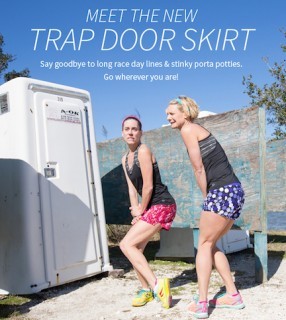
What started as a bit of April Fools' humor with this gag photo from Skirt Sports could result in the debut of the Skirt Sports Gotta Go Skirt soon.
When you gotta go, you gotta go, right?
While it’s a funny cliché, sometimes it’s a frustrating paradox as a runner—especially for women. Long porta-potty lines and much less of a chance to be subtle, make it tough to answer nature’s call discreetly—especially compared to men. But it’s not entirely a laughing matter: according to studies, 1 in 3 women suffer from athletic-induced incontinence.
Skirt Sports has a solution. The boutique Boulder, Colo., apparel brand that started the running skirt craze has launched a Kickstarter campaign to produce the “Gotta Go Skirt,” a running skirt that “keeps your assets covered” when you’ve really gotta go. As Skirt Sports founder Nicole Deboom says, “It’s a running skirt with a trap door and relief hatch so you don’t flash the world or lose time doing the struggle dance to get your skirt back on over your sweaty ass.”
Every marathon runner, trail runner and mother runner has an embarrassing “gotta go” story, she says, so why not make a real product to address a real—and often desperate—need?
“We announced this product as part of an April Fools’ email,” Deboom said. “It was half intended to be funny, but at the same time we wanted to see what people really thought. When thousands of women responded asking us to make it for real and said they would buy it, we knew we’d have some support.”
Why is Skirt Sports, an established brand founded after Deboom won Ironman Wisconsin wearing a running skirt in 2004, doing this via Kickstarter? First, two others women’s athletic apparel projects have garnered $600,000 in support recently—The Undress and The Evolution Bra—and because it’s a smart way to go forward with an unknown project, Deboom says.
“For a small company the upfront production commitments for an unproven product present a real risk that can deter innovation,” Deboom said. “Kickstarter gives us a way to embrace bold new, ideas and launch specialty products.”
The Gotta Go Skirt is based on Skirt Sports’ popular 13.5-inch Gym Girl Skirt. It has a pair of 5.5-inch built-in no-creep, chafe-free “shorties” underneath the skirt that have two large side pockets. The trap door feature is essentially a flap on the shorties secured by a low-profile hook and loop. An opening in the shorties, covered by the trap door, is “automatically aligned with your lady parts to enable easy, error-free evacuation when you squat.”
Kickstarter funders can contribute $5 to $170 to help Skirt Sports launch the product and will receive a variety of rewards. Those contributing at least $75 will get a Gotta Go Skirt in the spring when the production cycle is complete.
The Kickstarter campaign ends Nov. 18. For more product features and details, view the Kickstarter informational page.
“I knew there was a need for this because I have had many women come up to me and ask me about this through the years,” Deboom said.
The post Skirt Sports Launching ‘Gotta Go Skirt’ Project on Kickstarter appeared first on Competitor.com.
Rock ‘n’ Roll Lisbon Could Be Historically Fast
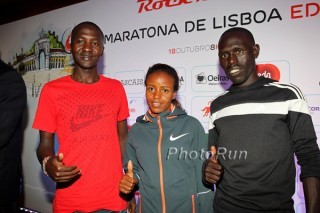
A few of the favorites: Alex Korio Oloitiptip (left) and Mare Dibaba in the half marathon and Lawrence Kimaiyo (right) in the marathon. Photo: PhotoRun.net
The Portugal capital of Lisbon will be host to two IAAF Gold Label Road Races this weekend—the Rock ‘n’ Roll Marathon of Lisbon EDP and the Rock ‘n’ Roll Half Marathon Vodafone RTP.
And judging by the fields that are lined up, it could be a really fast day of running.
On the men’s side, 10 runners are entered into the half marathon with personal-bests faster than 1:00:00. The course record of 1:00:19 set by Wilson Kiprop two years ago is in danger with the likes of Bernard Koech of Kenya (58:41 PR), Alex Korio Oloitiptip of Kenya (59:28), Atsedu Tsegay of Ethiopia (58:47), Geoffrey Kusuro of Uganda (59:43), and Nguse Amlosom of Eritrea (59:55) all racing.
The women’s half marathon also looks strong, with the 1:07:54 course record also in jeopardy. Mare Dibaba of Ethiopia is racing for the first time since winning the IAAF World Championships marathon in August. Her half marathon PR is 1:07:13, but it’s been four years since she’s won at the distance. She expects to be challenged by Ethiopians Wude Ayalew and Feyse Tadesse, along with Kenyans Rebecca Kangogo Chesire, Priscah Cherono and Beatrice Mutai and Portugal’s own Sara Moreira.
For the marathon, Kenyans Lawrence Kimaiyo (2:07:01), Daniel Limo (2:08:39), Silas Sang (2:09:10) and Stephen Kosgei Kibet (2:08:05) all look to be in the lead pack, each chasing the course record of 2:08:21 set last year by Samuel Ndungu. On the women’s side, up-and-coming Kenyan Purity Rionoripo (1:08:29 half marathon PR) will be making her much-anticipated marathon debut, going against fellow Kenyans Margaret Agai (2:23:28), Purity Changwony (1:10:34 half marathon) and others.
Rock ‘n’ Roll Lisbon features a scenic course that passes several historic landmarks of Portugal’s capital city, including the Belem Tower, Jeronimo’s Monastery, the Discoveries Monument, the 25 of April Bridge, Cristo Rei Statue, Vasco da Game Bridge and the Orient Railroad Station.
The post Rock ‘n’ Roll Lisbon Could Be Historically Fast appeared first on Competitor.com.
Placebo Study Uses Salt Water Injections to Make Runners Faster
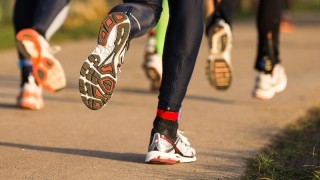
If you believe there’s something in salt water that makes you a faster runner, then according to this study, you’ll most likely run faster. New research published in the Medicine & Science in Sports & Exercise journal has demonstrated how the placebo effect can alter athletic performance for better results.
This should be a given considering that running not only relies on physical capabilities, but also on our motivational capacities. Our attitudes and mindsets greatly affect whether we believe we can achieve that new PR or not, and it’s what makes it possible to pick up the pace in the last miles of a marathon. When we think we’ve reached our physical limits, our minds can kick in with an extra reserve of energy, endurance and strength.
Although mental deception in training has been tested before, this particular study is the first to test placebos in real-world competitive situations to find out if there’s still room to tap into physical reserves during races—based on the assumption that we always use 100 percent of our effort in competition.
The researchers at the University of Glasgow in Scotland, thus gave 15 male endurance-trained recreational runners injections of salt water, in which the men were told was a legal form of erythropoietin , or E.P.O, a substance that increases red blood cells in the body. E.P.O. is commonly known as a performance enhancing drug in sports as it helps carry more oxygen to laboring muscles produced from the increase in number of red blood cells.
Researchers informed participants that this “drug” would have less harmful side effects and a lower dosage than the banned E.P.O. drug, but would still increase the red blood cell count and thus improve performance.
The 15 participants were initially split into two groups for randomized testing. The first group underwent a weeklong control phase in which nothing was given but the men continued a regular training week, and then followed with a placebo phase in which they received daily saline injections for another week. The second group started with the placebo phase and then ended with a control phase.
Before undergoing the different phases though, participants competed in a 3K race on a track to determine baseline finishing times. They then raced again after the first week, the men then switched phases, and after another week of mixed placebo and control subjects, raced a final time.
The results? After the placebo week, quantitative data showed that the men improved their 3K race-time by 1.2 percent compared to the control week which had little to no change in race time. Qualitative logs on how the men felt during the placebo interventions also reveal that the men felt more confident and motivated, and one participant even admits, “Everything was much quicker. I have to admit when I was on the substance I was on the verge of injury. I kept pushing myself too hard, just because I could and because it was fun.”
Reversely, the comment about feeling over-confident also shows that the placebo could potentially have a negative effect on training, but overall the fake drug had “a meaningful performance enhancing effect,” said the lead physiologist of the study, Ramzy Ross, in a New York Times article.
The post Placebo Study Uses Salt Water Injections to Make Runners Faster appeared first on Competitor.com.
October 15, 2015
Strength Training for Runners: Pistol Squats
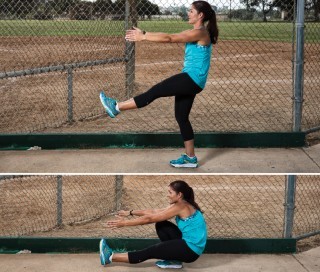
Photo: Scott Draper
“Pistol squats help a runner identify leg imbalances and work on improving these imbalances by training the legs separately,” says Siobhan Kilgallen, director of Athletic Reconditioning at the United States Air Force Academy in Colorado Springs. “This exercise is also beneficial for runners who train on uneven surfaces.”
Pistol squats also develop flexibility, endurance, balance, coordination and strength by targeting the quads, hamstrings, calves, buttocks, core and hip muscles.
How To Do It:
(Note: Beginners should place a chair, bench or box behind them for support and guidance.)
Step 1: From a standing position, extend your arms outward so they’re parallel to the ground. Extend one leg out in front of you. Don’t allow the toes of the standing leg to turn outward or inward.
Step 2: Slowly squat down on your standing leg while keeping your other leg extended in front of you. “Don’t allow your heel to come off the ground,” Kilgallen warns. “If this continues to happen, place an object under your heel to provide a ramp.”
Step 3: Squat as low as you can (beginners should try to touch their butt on a chair) and press into the standing foot before returning to the starting position. Resist the urge to bounce as you go back to the first position.
Kilgallen recommends doing 3 sets of 10 repetitions of this exercise on each leg. Try to squat lower and lower while maintaining a stable stance. Eventually try not to use anything supporting you from behind. Keep the shin of the standing leg as close to vertical as possible, and also try to keep your back flat.
RELATED:
— Strength Training for Runners: Single-Leg Deadlifts
— The 4 Best Strength Training Exercises for Runners
The post Strength Training for Runners: Pistol Squats appeared first on Competitor.com.
Market Watch: Which New Shoe Releases Are You Most Excited About?
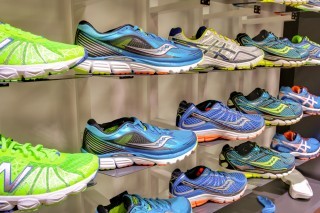
Photo: Shutterstock.com
We asked eight owners and managers of specialty running stores around the country which new shoe releases they’re most excited about this fall.
RELATED: Fall 2015 Trail Running Shoe Guide
Photo Gallery
1 of {count}
Back to Start
View Larger Image

Andrea Lehmkuhler, Manager, Point 2 Running Company, Newport News, Va.
“I’m looking forward to the Mizuno Wave Inspire 12. With the addition of U4icX, a midsole component, runners can experience a softer touch down while still enjoying the Mizuno fit. Pair this with the Rider 19 and you have two shoes that will fit and feel great to many runners.”
View Larger Image
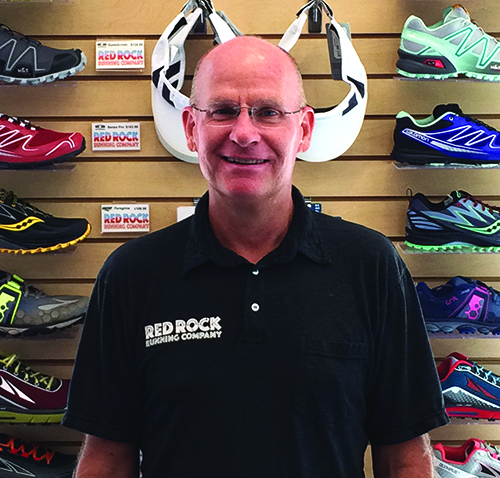
Brent Bowers, Manager, Red Rock Running Company, Las Vegas
“We’re looking forward to the Brooks Ghost 8. It’s a smooth ride for the heel or forefoot striker and a responsive shoe with just the right amount of cushioning.”
View Larger Image
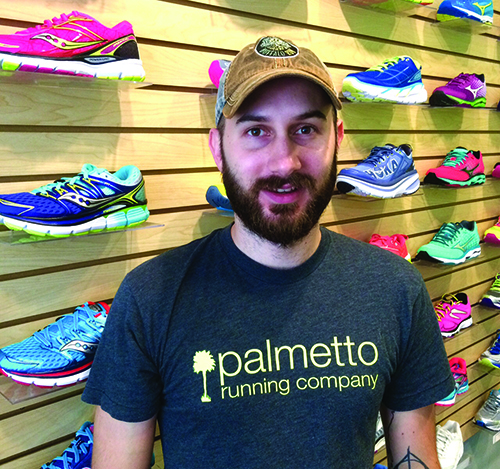
Christian Fyfe, Manager, Palmetto Running Company, Hilton Head Island, S.C.
“Our store is most excited about the New Balance Vazee Pace. It’s lightweight but springy, and the accommodating toe box should make it a great option for both training and racing this fall marathon season.”
View Larger Image
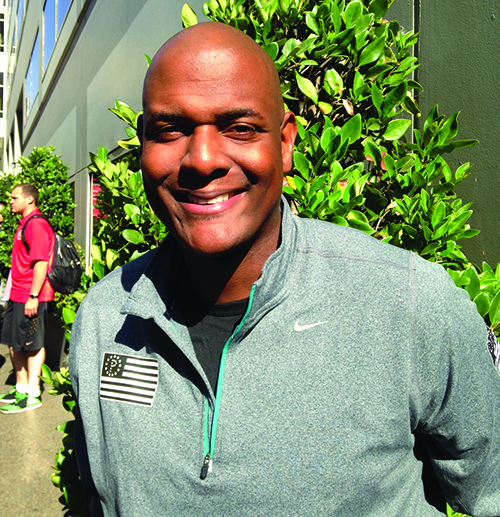
Jason Smith, Manager, Georgetown Running Company, Washington, D.C.
“The Nike Air Zoom Odyssey is the shoe that can do it all! High cushion, high stability with Air Zoom in the forefoot and heel. Also the Flymesh upper feels like a sock while still providing great support and a locked-down feel with Dynamic Flywire.”
View Larger Image
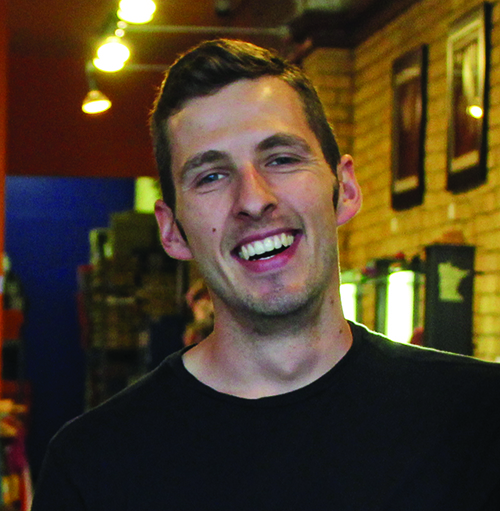
Jeff Metzdorff, Owner, Mill City Running, Minneapolis
“A staff favorite, Saucony now adds their proprietary Everun cushioning to their new Kinvara 7. This has the possibility to take the shoe to the next level or alienate longtime fans. Either way, I’m excited to test them out.”
View Larger Image
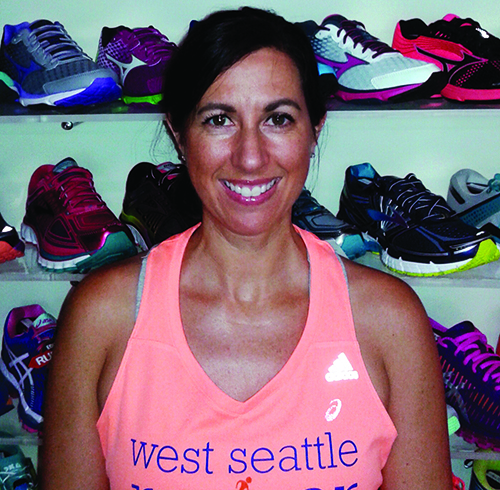
Lori McConnell, Owner, West Seattle Runner, Seattle
“We’re really excited to get the Hoka Bondi in wide widths. We get regular referrals from podiatrists for the Hoka to help forefoot pathologies, including bunions and neuromas. The problem is that these customers often need a wide toe box and now Hoka is answering both problems.”
View Larger Image
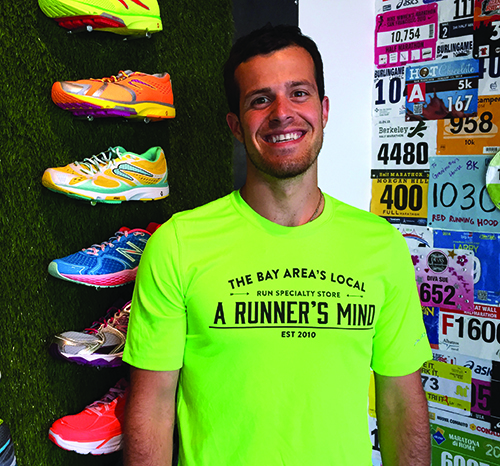
Monte Keleher, Owner, A Runner's Mind, San Francisco
“We are always excited when an already good shoe gets a great update. The Mizuno Inspire 12 has a bit more underfoot, but still retains that snappy responsive Mizuno feel—getting more runners into them, and keeping their current wearers coming back.”
View Larger Image
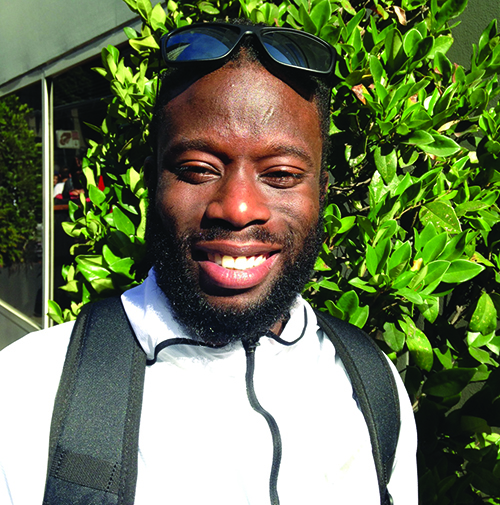
Mack Exilus, Co-Manager, New York Running Company, New York City
“I’m excited for the Saucony Kinvara 6. The Kinvara was one of my first training shoes. It’s fast and light, but still perfect for long runs. I trained for Philly in 2013 in them and they were great for the track and the long run.”
Related Galleries
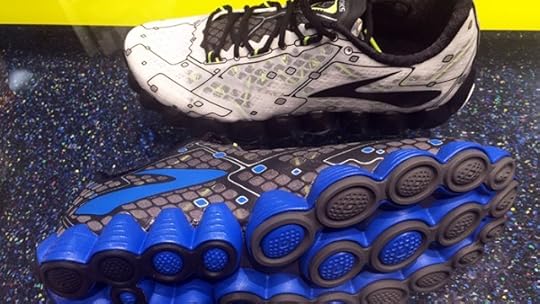
Sneak Peek: First Look at 31 New Shoes for 2016
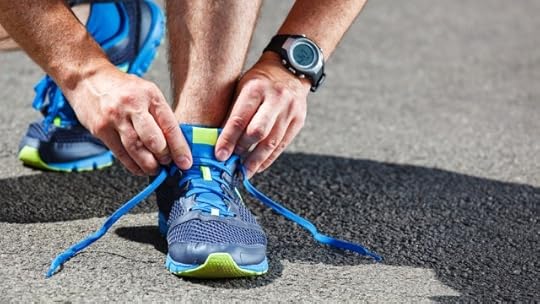
Market Watch: What Should Beginners Look For When Buying Their First Pair of Running Shoes?

Photos: How New Balance Makes Running Shoes in America

Market Watch: What Do You Look For in a Good Trail Running Shoe?

More Galleries
The post Market Watch: Which New Shoe Releases Are You Most Excited About? appeared first on Competitor.com.
Trail of the Week: Rattlesnake Trail, Missoula, Montana

Our Trail of the Week feature is made possible through a partnership with Trail Run Project.
If you’re looking for a place to do a tempo run in a trail environment, it doesn’t get any better than this trail near Missoula, Montana.
The Rattlesnake Trail is a wide, gently sloping bike path-like trail for much of the way though it does turn a little rocky and has some small rises at times. It’s a beautifully shaded trail that follows Rattlesnake Creek up the valley.
Start at the Rattlesnake parking lot just outside of Missoula where there is plenty of parking and restrooms available. The trail is very wide and flat at first but will soon begin heading up though gently, less than 100 feet a mile on average. All along the way you’ll find plenty of trails shooting off the main trail to explore.
The Main Rattlesnake Trail #515 ends at Franklin Bridge just over 8 miles out. You can cross the bridge and continue on Upper Corridor Rattlesnake Trail #515 which increases in difficulty.
The Data
Miles: 8.3
Runnable: 100 percent
Average Grade: 1 percent
Max Grade: 7 percent
Total Ascent: 635 feet
Total Descent: -22 feet
Highest Elevation: 4,213 feet
For a closer look, check out the interactive map, data, photos and virtual run simulator courtesy of Trail Run Project:
The post Trail of the Week: Rattlesnake Trail, Missoula, Montana appeared first on Competitor.com.
Running Tech Buzz: adidas miCoach
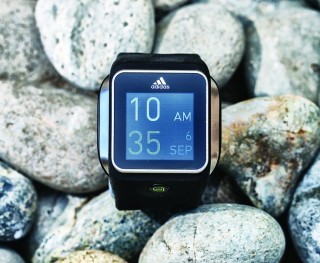
Photo: Scott Draper
Adidas’ latest smartwatch packs a lot into its burly body: GPS, heart rate, 4GB Bluetooth music player and a running/strength/flexibility coaching system. We took advantage of the many color-coded heart-rate or pace-zone run workouts and plans included, and also easily built our own. The assessment to set zones can be finicky in getting a fix on both pace and heart rate zones in a single workout—but is easy to adjust. The only caveat: Power can bleed fairly quick. A one-hour interval workout with heart rate, music, audio cues and GPS uses 30 percent battery; marathon mode without any audio extends battery life.
Breakdown
Phone-free music
Load your own—or as we did, rock the included MixRadio, which matches pace to adidas mixes.
Strength and flexibility workouts
miCoach can guide you through run and other sport-specific routines (with or without gym equipment) using on-watch demo animations, timers and heart rate.
Color and sounds
Color-coding of zones, values and screen layouts, along with audio and vibration cues, were clear and concise during interval workouts, keeping us aware and on track.
RELATED: Running Tech Buzz: Garmin Vívoactive
The post Running Tech Buzz: adidas miCoach appeared first on Competitor.com.
Out There: Growing Bolder
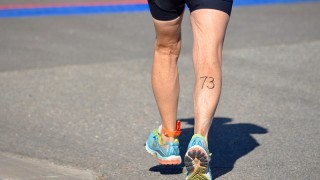
There’s a lot to fear about aging—a creaky body, wrinkly skin, and hourly utterances of “where did I put my glasses?” I’ve always equated aging with feeble and frail —two conditions I’d like to avoid at all costs.
But recently, I saw aging in a different form—specifically, the form of my mother-in-law in spandex.
It all started last month, when my husband’s mom, Marilyn, turned 60. To mark the occasion, she announced she would race her very first triathlon.
“Why should you guys get to have all the fun?” She pointed at her kids—who, combined, have recorded more than 100 marathon and 20 Ironman finishes. “It’s my turn now.”
We were supportive, of course, but when she revealed the race she selected was part of the Huntsman World Senior Games, we couldn’t help but make jokes:
“Will there be a Hoveround division?”
“Is it doping if you put fiber powder in your water bottles?”
“I bet the finisher medals have a built-in Life Alert button.”
Marilyn, however, was undaunted. “Joke all you want. I’m too old to care what anyone thinks of me.” As she walked off, you could hear her muttering, “Now where did I put my glasses?”
The Huntsman World Senior Games is an annual sporting event for seniors, who compete in everything from track and field to square dancing. Because Huntsman competitors range from 50 to 100 years old, when I arrived to the Games to cheer on my mother-in-law, I expected to see a lot of…well, old people.
Instead, I saw a 74-year-old woman running a half marathon in 2 hours and 14 minutes, an 86-year-old man competing in the triple jump, and a 90-year-old woman hopping into the pool to race the 50-meter backstroke.
This is aging? Sign me up.
What was particularly surprising about these competitors was not how spry they were for their age, but that so many of them got a late start. Like Marilyn, many competitors started their new sport later in life, because, as one 75-year-old competitor put it, “What else am I supposed to do for the next 20 years? Knit?”
Yes, aging sucks sometimes, many competitors admitted. There are aches and wrinkles and forgetful moments. There are idiots who think it’s funny to make jokes about the elderly (ahem).
But growing older is also awesome. After 60-plus years of caring what other people think, most of these competitors finally stopped giving a damn. The insecurity of youth—looking a certain way, acting their age, keeping up with the Joneses—eventually gave way to the realization that none of it matters. They can do what they want, and they don’t really care what anyone thinks.
Instead of criticizing their 30-year-old bodies in the mirror, they proudly display their 60-year-old flesh in a spandex suit and dive into the pool with a smile. Instead of wasting time on “appropriate” pursuits they don’t really enjoy, they take on the hobbies that really interest them. Instead of avoiding Father Time, they welcome him—and possibly challenge him to a push-up contest.
I’m too old to care what anyone thinks of me. Who knew aging could be so liberating?
****
About The Author:
Susan Lacke does 5Ks, Ironman Triathlons and everything in between to justify her love for cupcakes (yes, she eats that many). Susan lives and trains in Salt Lake City, Utah with three animals: A labrador, a cattle dog, and a freakishly tall triathlete husband. She claims to be of sound mind, though this has yet to be substantiated by a medical expert. Follow her on Twitter: @SusanLacke.
The post Out There: Growing Bolder appeared first on Competitor.com.
Kenya To Hold Its First Ever Olympic Marathon Trials
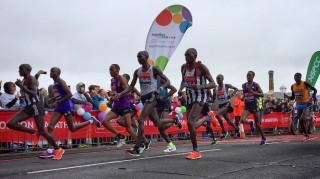
Wilson Kipsang, center, competes at this year's London Marathon. Photo: Mario Fraioli
The second weekend in February of next year got a lot more interesting on Thursday, as Athletics Kenya announced that they’ll hold its first ever Olympic Trials for the marathon on February 14 at a yet-to-be-determined venue. The U.S. Olympic Trials Marathon will take place on Feb. 13 in Los Angeles, the day before the Los Angeles Marathon. At both Trials events, the top-3 male and female finishers will represent their respective countries at the 2016 Olympic Games in Rio de Janeiro.
“This is a new policy, that the best way to select the marathon team is to hold a national trial early enough for Rio,” Athletics Kenya director of competitions David Okeyo told The Times of India. “The selected athletes must run their last marathon events in February.”
Athletics Kenya has February 14 listed on their website’s event calendar as the date for the “Marathon Trials for Team Kenya to RIO” but no further information has been posted. The staging of a Trials race to select their Olympic marathon team is huge deviation from the past practices of Athletics Kenya, whose officials would handpick the athletes based on a set of ambiguous, constantly changing criteria. Prior to 2012, Athletics Kenya had traditionally used the Boston and London marathons as unofficial selection races to determine who would represent the country at the Olympic Games and world championships, but chairman Isaiah Kiplagat deviated from that practice in the lead-up to the London Games. Geoffrey Mutai was left off the Kenyan Olympic team in 2012—presumedly for dropping out of the 2012 Boston Marathon due to heat issues—despite winning both the 2011 Boston and New York City marathons in record time, as was Patrick Makau, the world-record holder at the time who dropped out of the 2012 London Marathon. Wilson Kipsang, the 2012 London Marathon champion, was named to the team, along with world champion Abel Kirui and 25,000m and 30,000m world-record holder Moses Mosop, who finished second to Mutai in his marathon debut at Boston in 2011.
“I did not expect to be left out of the team,” Mutai told All Africa in 2012. “What is more painful is that after being selected in the initial team of six, I was not informed again of the decision to leave me and I only learnt of it through the media.”
Lack of depth has never been an issue for Kenya in the marathon, but Athletics Kenya officials have become increasingly disappointed with the country’s marathon performances at global championships. Heading into the London Games, Kenyans dominated World Marathon Majors Series races and posted many of the world’s leading times on both the men’s and women’s sides. At the 2012 Olympic Marathon, Kirui and Kipsang took silver and bronze, respectively, while Emmanual Mutai—who was originally not named to the team but replaced the injured Mosop—finished a disappointing 17th. On the women’s side, Priscah Jeptoo claimed silver, two-time London Marathon champion Mary Keitany finished fourth and multiple world champion Edna Kiplagat crossed in 20th place.
At the recent world championships in Beijing, Kipsang and Dennis Kimetto—the current world-record holder—both dropped out of the men’s marathon. Mark Korir was Kenya’s only male finisher, crossing the finish line in 22nd place. Helah Kiprop took silver for Kenya on the women’s side, while Jemima Sumgong and Edna Kiplagat finished fourth and fifth, respectively.
“We saw the results in the 2012 London Olympics, and both the 2013 and 2015 world championships in Moscow and Beijing—which were not very satisfactory for a nation that has dominated top marathon races in the world,” Okeyo said.
The post Kenya To Hold Its First Ever Olympic Marathon Trials appeared first on Competitor.com.
Ryan Hall's Blog
- Ryan Hall's profile
- 21 followers



